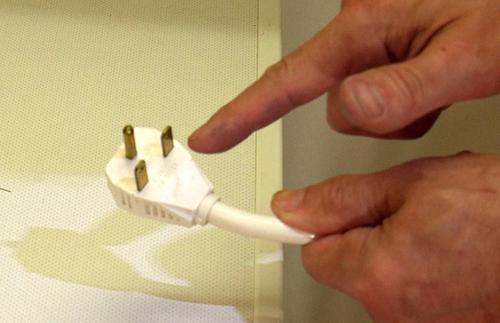 Rachel found a great deal on a used Bosh front loading washer. After wrestling it
into place I wanted to plug it in, and only then realized, it has a 240 volt
plug on it. Oops!
Rachel found a great deal on a used Bosh front loading washer. After wrestling it
into place I wanted to plug it in, and only then realized, it has a 240 volt
plug on it. Oops!
 Rachel found a great deal on a used Bosh front loading washer. After wrestling it
into place I wanted to plug it in, and only then realized, it has a 240 volt
plug on it. Oops!
Rachel found a great deal on a used Bosh front loading washer. After wrestling it
into place I wanted to plug it in, and only then realized, it has a 240 volt
plug on it. Oops!
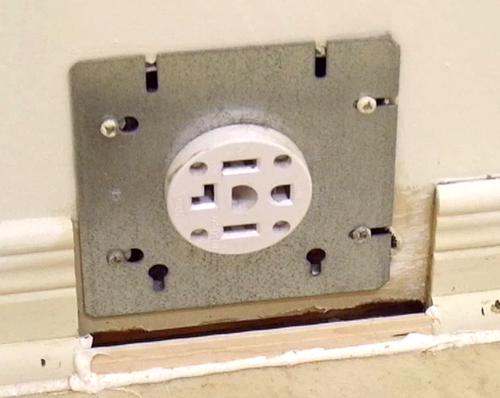 But we almost never use a dryer, so we decided that putting the dryer in the upstairs
laundry closet was a waste of valuable closet space (We'll probably install it in
the basement later). That means we had the 240 volt dryer plug unused.
But we almost never use a dryer, so we decided that putting the dryer in the upstairs
laundry closet was a waste of valuable closet space (We'll probably install it in
the basement later). That means we had the 240 volt dryer plug unused.
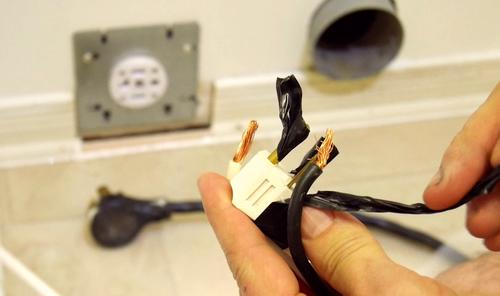 As a temporary fix, and to make sure the washer works,
I used an old dryer power cord and taped it to the prongs of the
washer's plug. It stayed like that for several weeks and many loads of laundry.
As a temporary fix, and to make sure the washer works,
I used an old dryer power cord and taped it to the prongs of the
washer's plug. It stayed like that for several weeks and many loads of laundry.
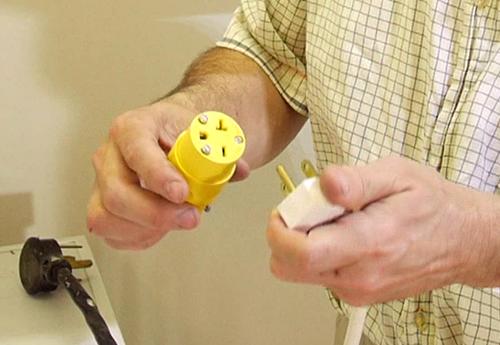 I bought a 240 volt socket (the kind that goes on the end of an extension cord)
to make a less hacked up solution.
I bought a 240 volt socket (the kind that goes on the end of an extension cord)
to make a less hacked up solution.
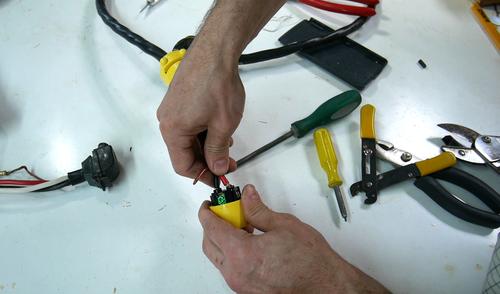 I attached that to the end of the dryer's power cord.
I attached that to the end of the dryer's power cord.
The red and black wires are the "hot" wires and connect to the two slots for the flat prongs and the ground connects to ground on the socket. The 240 volt socket doesn't have a neutral, so I just cut that wire short. I didn't worry about trying to insulate the end of the wire because it's just ground (ground and neutral are connected together in the breaker panel)
The cool thing about having a cord like that is that it could also be used to connect a table saw with a 3 hp motor to a dryer plug. I know a lot of people are reluctant to get a bigger table saw because extra wiring needs to be run, but if you plug it into the dryer plug, you won't need an extra socket (unless you frequently use a clothes dryer)
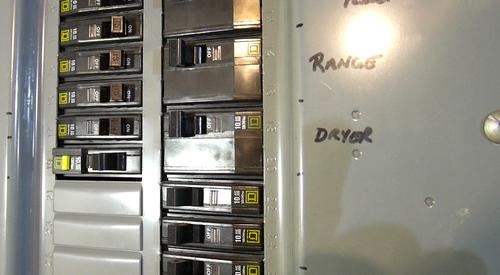 One caveat with this is that breakers for dryers are typically 30 amperes, whereas the type
of 240 volt plug shown typically has a 15 or 20 amp breaker.
One caveat with this is that breakers for dryers are typically 30 amperes, whereas the type
of 240 volt plug shown typically has a 15 or 20 amp breaker.
So if you draw more than 15 amperes, the breaker won't pop (it will however pop for a short circuit). You won't overload the wiring in the house, because that wiring is made to carry that kind of load, but you may end up overheating the power cord to your saw, or the plug (though, much more likely, the thermal protection in the saw's motor will trip first).